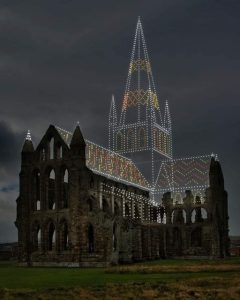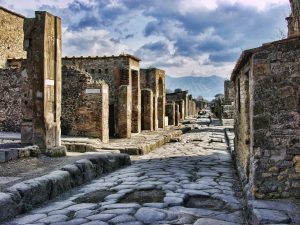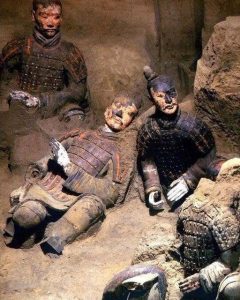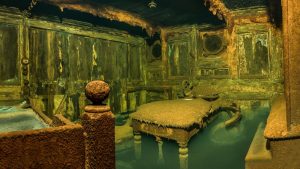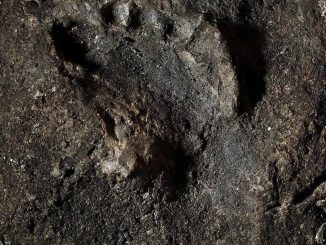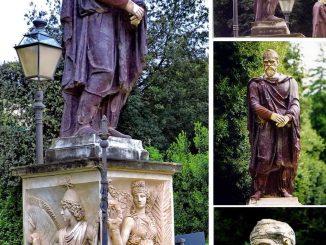
Nestled in the picturesque landscape of North Yorkshire, England, lies the majestic ruins of Whitby Abbey, a testament to centuries of history and architectural grandeur. Recently, these ancient ruins have been brought to life through the innovative use of drone lighting, offering a captivating glimpse into the past. In this article, we embark on a journey to explore the ruins of Whitby Abbey, delving into its rich history and the remarkable beauty it continues to exude.

A brief history of Whitby Abbey
Whitby Abbey was a 7th-century Christian monastery that later became a Benedictine Abbey. The first monastery was founded in 657 AD by the Anglo-Saxon era King of Northumbria, Oswy (Oswiu). He appointed Lady Hilda, Abbess of Hartlepool Abbey and grand-niece of Edwin, the first Christian King of Northumbria, as founding abbess.
The first incarnation of the Abbey
The first incarnation of the Abbey under St Hilda lasted 200 years. At this time the North-East of England was invaded by the Danes, or as they are more commonly known – Vikings! The invasion of the Danes wrought great destruction across the region and led to the fall of the Abbey. For the next 200 years, the Abbey was derelict, deserted, and destroyed by the ravages of time.
The next incarnation of the Abbey
The next incarnation of the Abbey was in the 11th century shortly after the Norman Conquest. It is these ruins that remain today. The story goes that a Norman knight travelled to England with William the Conqueror. After witnessing many bloody battles to defeat the rebellious Anglo-Saxon lords in the north of the country, he became a monk. In 1067, with the generous help of local lord, William de Percy, Reinfrid founded the second Abbey at Whitby. This new Benedictine institution was at first merely a priory. It was granted Abbey status only in the early 12th century.
It was in this guise that the Abbey performed a lot of services to the local community providing for their religious needs through the running of churches, providing employment to a great number of people, and supporting local crafts and industries in the area.

Suppression of the Monasteries
Alas, this happy time couldn’t last. The age of monasticism was about to come to an abrupt end. In the South of England, a process known as the Suppression of the Monasteries began in 1509. Numbers were dwindling in the great monastic houses. Novices were in short supply and many religious houses were merged to ensure survival or sold to turn the assets into cash for use elsewhere.
It was in this way that Cardinal Wolsey had planned for a great college at Cambridge to be named after him. Henry, however, now King had other ideas. Wolsey failed to secure a divorce on behalf of the King from Catherine of Aragon and the Cardinal fell from grace. King’s College, Cambridge, was thus named for the monarchy rather than the Catholic Church.
On the 14th December 1539, Henry VIII ordered Whitby Abbey to close. The dissolution of the monasteries had reduced the old way of life to dust. The result of a whimsical monarch demanding everything go his way.

Remembered at the Abbey is the First English Poet
It is through the contribution of Caedmon who is remembered at the Abbey and at St Mary’s Churchyard with a cross, that Whitby lays claim to a literary first. Caedmon was a Northumbrian who cared for the animals at the double monastery of Whitby Abbey during the abbacy of St. Hilda, he was originally ignorant of “the art of song” but learned to compose one night in the course of a dream, according to the 8th-century historian Bede. He later became a zealous monk and an accomplished and inspirational Christian poet. Caedmon was the first English poet whose name is known and Whitby is the birthplace of English literature.
Establishing the Date of Easter
The first Synod of Whitby took place to establish the date of Easter. The story goes that in a toss-up between the Ionan practice followed by Irish monks and the Roman tradition favoured by Rome, the decision was settled by Oswui. King Oswui asked both sides if they agreed that St Peter had been handed the keys to the kingdom of Heaven by Christ and pronounced as ‘the rock’ on which the church would be built. Reasoning that St Peter was the highest authority in the Church it was conceded that the Roman tradition is kept. Easter was fixed to be held on a Sunday, the day of Resurrection.
Whitby Abbey and Dracula
One of the things that really put Whitby Abbey, or rather the ruins of the Abbey, on the map was the publication of the novel Dracula by Bram Stoker. This was published in 1897 and resulted in renewed interest in the ruins of the Abbey. Bram Stoker came to visit Whitby town in 1890, and it was this visit that gave him the inspiration that he was looking for to create his world-famous character and the Gothic novel.
The ruins of Whitby Abbey dominating the landscape and the eerie setting of the ruins gave him inspiration for his book. He also went to a local library, where he found a book that was written eight decades earlier. This book mentioned an evil 15th-century villain in Romania who was known as Dracula and impaled people on wooden stakes. While the book did take a number of years to write following his visits to Whitby, it was his experience in this town and of the Abbey ruins that provided him with his inspiration. If you have visited Whitby you can totally imagine St Mary’s Churchyard on Whitby’s windswept headland, with the dramatic Abbey ruins towering over it, surrounded by swooping bats!
“For a moment or two I could see nothing, as the shadow of a cloud obscured St. Mary’s Church and all around it. Then as the cloud passed I could see the ruins of the Abbey coming into view; and as the edge of a narrow band of light as sharp as a sword-cut moved along, the church and churchyard became gradually visible… It seemed to me as though something dark stood behind the seat where the white figure shone, and bent over it. What it was, whether man or beast, I could not tell.” – Bram Stoker, Dracula

Many visitors climb the 199 steps in the hope of discovering the final resting place of Dracula. Alas, the grave of the world’s most famous vampire is not here. Vlad Tepes better remembered as Vlad the Impaler, the ‘real’ Dracula, is buried in his homeland of Transylvania at Lake Snagov. Even so, there are many interesting monuments to be found in this unusual and enigmatic churchyard.
Illuminated Whitby Abbey
If you want to see Whitby Abbey in a new light and from a new perspective, one event you may be interested in is the Illuminated Abbey. It’s a brilliant night of fun, food, theatre and actors ready to tell spooky stories associated with the Abbey. In addition, you can also come along in fancy dress for Halloween.
199 Steps to St Mary’s Church and Whitby Abbey
The 199 steps, known as the Church Stairs, lead from the Old Town up to St. Mary’s. 1340 is the first known record of the 199 steps, however, it is believed the steps were actually made a long time before this. Some historians believe that St Hilda would use the steps as a test to confirm the faith of her followers. This was a test of Christian faith to those who wished to worship in St Mary’s Church. The steps were actually originally made of wood and stood for hundreds of years that way until 1774 when the steps were replaced with Sneaton Stone.

The benches on the 199 steps are great a place to catch your breath and take in a wonderful Whitby view. Before the 19th century, when St Mary’s was still open for burials, there was a tradition to carry coffins up the steps. Rather than take the easy journey in a horse and carriage along Green Lane. Relatives of the deceased would climb the 199 Steps with the coffin.
Can you imagine how extremely tiring carrying a body up 199 steps would be? Therefore wooden planks were built at intervals to place the coffin and give the pall-bearers a rest. Though official pall-bearers weren’t always used. As tradition would have it often men would be carried by their male companions, women would be carried up by female friends and family members, and children would be carried by children.

So are there 199 steps?
Despite their name, there is a lot of dispute about how many steps there are. Some people believe there are 198 because you shouldn’t count the final step to the top, as this is not a step, it is in fact the top. Others believe 200 because of the step from the bottom onto Church Street. Every 10th step, and the last, are now numbered with Roman numerals so you don’t have to count them anymore. If you have ever walked up the 199 Steps you’ll know what a challenge they can be!
Whitby Abbey today
In 2019 the Abbey was reopened after a major project took place on the visitor centre, museum and interpretation across the site. Almost £1.6 million was invested to transform Whitby Abbey so its history can be enjoyed for many years to come. You can now explore 3,000 years of history in The Ammonite Quest exhibition with dramatic displays of unique objects and a new and free interactive experience.

Outdoors, the courtyard area has been transformed into a place of total peace and calm with a tree-lined avenue, seating and green spaces planted with herbs perfect for a relaxed coffee or a picnic. There is also a cosy coffee shop near the entrance to the abbey.
It is a perfect viewing point offering stunning views of Whitby harbour and town, offering events throughout the year. There is a Visitor Centre that is interactive and has an audiovisual exhibition, keep a lookout for the talking heads and fascinating finds from Anglo-Saxon and medieval periods.
